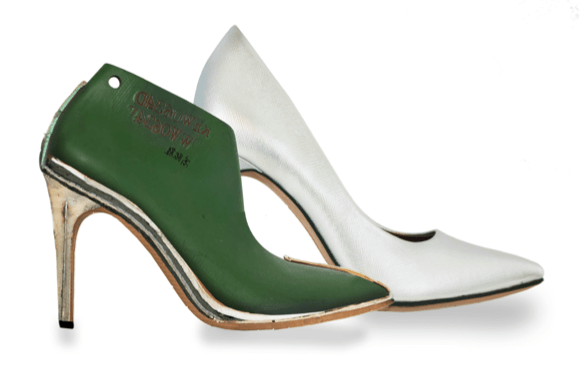The shoe last is the starting point of every footwear design and has been called “the heart of the shoe.” The last is the center of the entire shoemaking process. The shoemaker starts with the last and builds the shoe outward.
The shape of the last determines the fit, performance, ergonomics, and styling of a shoe.
It is also what makes a shoe suitable for playing basketball, climbing mountains, or running a marathon. A great footwear design is nothing if the last is not appropriate to the shoe’s function.

The shoe last
The last is a roughly foot-shaped form made of molded plastic, carved wood, cast aluminum, or 3D printed plastic. Why is the last called the last? The word ‘last’ comes from the old English word ‘laest,’ which means ‘footprint.’ The first shoe lasts were used by the Greeks and Romans. We know from ancient writings that lasts were used to make shoes around 400 BCE!
Then as now, the last is critical to the shape and the fit of a shoe. The last is used in all phases of the shoemaking process. The last sets the size, silhouette, and outline of the shoe. The last plays a central role from the design phase through the development process and on the production assembly line.
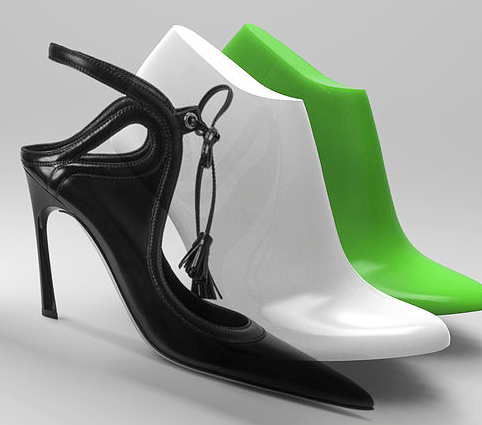
Footwear design with the last
The footwear designer will often draw a new design directly onto the surface of a last or draw the design on paper using the 2D last silhouette as a guide. The shoe designer must follow the outline shape of the last bottom to draw an accurate outsole design.

Footwear development and the shoe last
When a shoe design is passed to the development team, the pattern maker will need the last to transform the design drawings into the 2D shapes that will fit the 3D last. The pattern maker can use the physical last or a CAD model of the last to create the shoe pattern. The last is used to test fit all the cut parts and any molded parts required for the design.
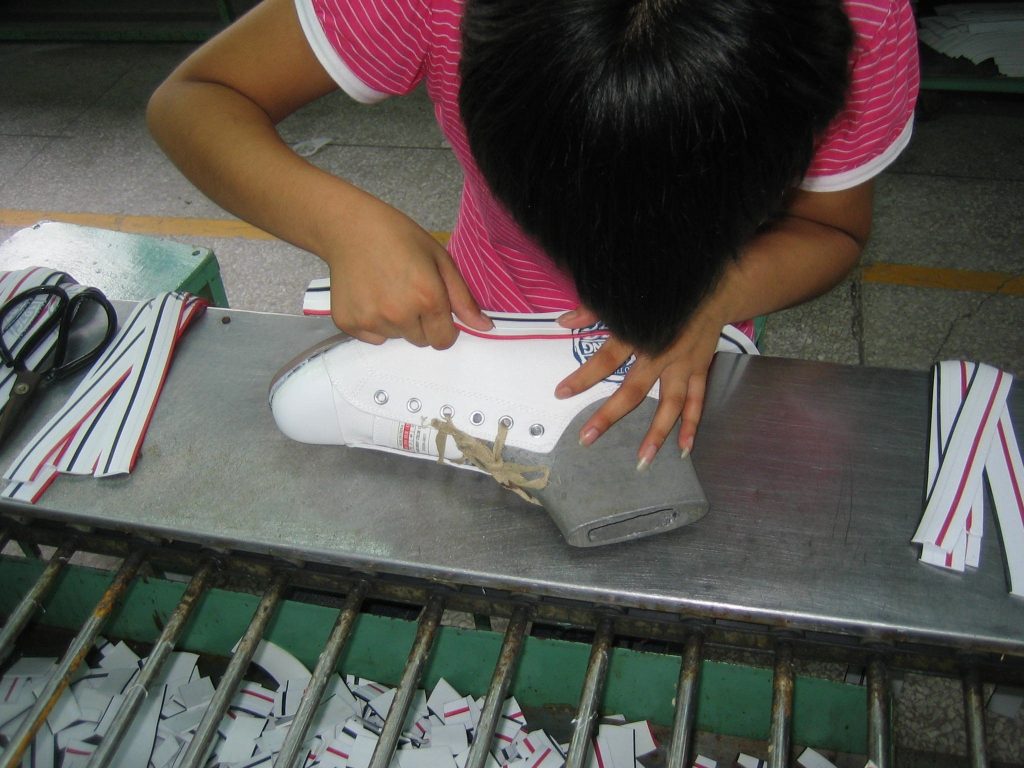
The shoe last in footwear production
When a shoe is in production, the stitched pattern will be stretched over the last to create the final shape. This operation is called “lasting.” There are several different lasting techniques used to pull the patterns into shape. These include force lasting, board lasting, string lasting, toe lasting, heel lasting, hand lasting, and machine lasting. Once the pattern is tight to the last, the outsole can be attached. The last holds the soft upper in place, whether the sole is sewn on or cement-bonded.
Footwear function and fashion
The modern shoe last is not a replica of the human foot. The shoe last is a generalization of the
human foot with care taken to account for natural articulation and volumetric changes as the foot moves and flexes. A high quality running or walking shoe will have a thoughtfully developed last. A large shoe brand will have the help of shoemakers, podiatrists, and kinesiologists to develop biomechanically ideal shapes.
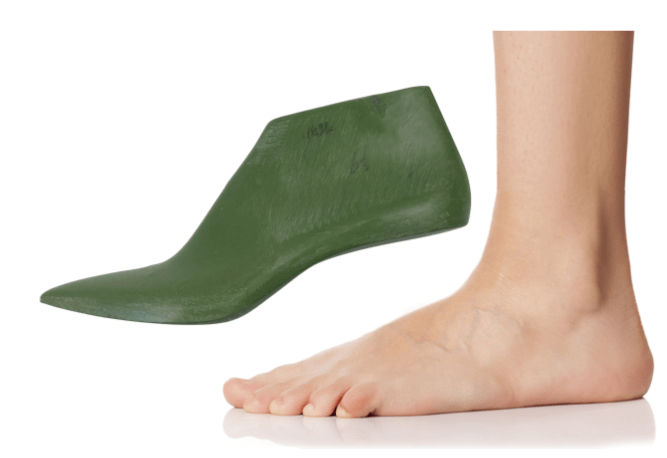
How the shoe last differs from the human foot?
The last surface is smooth and firm with graceful transitions. The human foot has an irregular shape with a variety of soft and wrinkled surfaces.
Most shoe lasts do not have individual toes. The sandal last will have a slot for the toe-post location. The new toe shoe trend requires lasts with toes, but these are rare. The vast majority of shoe lasts do not have toes.
The heel pitch that lifts your heel off the floor does not exist in the human foot. The toe spring of the last also does not exist in human anatomy but aids in walking and helps the shoe flex with the foot without wrinkling. The girth measurements around the foot are larger in a shoe last than the foot to account for the volumetric changes as the foot flexes when walking under load.
Shoe lasts are also slightly longer than the foot. This extra length allows the foot to move inside the shoe when walking or running. The general outline shape of the last and its extended length allow it to address the great variety of human feet. The last length ahead of the toe tip gives the designer a chance to sculpt the shoe according to fashion trends.
Shoe last sizes and dimensions change or “grade” in a systematic arithmetic way. Lasts are also symmetrical, the right side being a mirror image of the left. The human anatomy obeys no such rules for size and symmetry.
In about 80% of the population, the foot of your dominant hand can be 1/8 to 1/3 of an inch shorter than the foot of your non-dominant hand. Thus, right-handed people will have a slightly larger left foot.
Finally, lasts are designed by human minds to follow the whims of fashion and human-
made functional parameters. The foot itself has evolved over millions of years to provide walking propulsion and weight-bearing functions in natural environments. Evolution has not prepared the biology of the human foot for hot asphalt, factory floors, or modern office floors.
A last’s shape is also critical to the fashion or style of the shoe. The skillful work of the best Italian prima donna designer is wasted if the pattern is made on a last designed for a mountaineering boot.
The last is the unseen structure for the sculptural art of today’s high fashion footwear designers. When “style is king,” the consideration for human anatomy is sometimes set aside.
Shoes, patterns, and lasts have been created to transform the human foot into an instrument for sports, a tool for work, a mode of transportation, and even an object of desire.
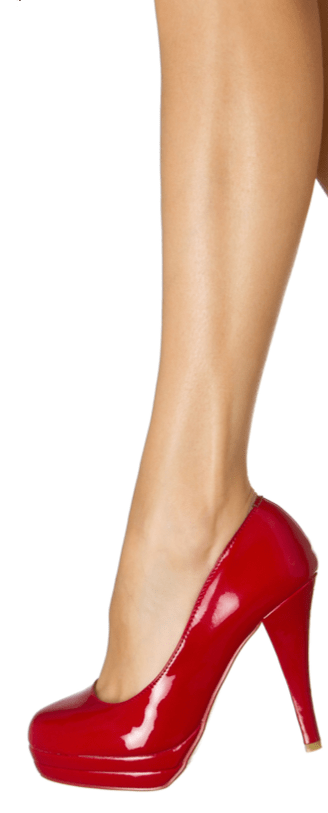
A last’s shape is also critical to the fashion or style of the shoe. The skillful work of the best Italian prima donna shoe designer is wasted if the pattern is made on a shoe last designed for a mountaineering boot.
The shoe last is the unseen structure for the sculptural art of today’s high fashion footwear designers. When “style is king,” the consideration for human anatomy is sometimes set aside.
Shoes, shoe patterns, and shoe lasts have been created to transform the human foot into an instrument for sports, a tool for work, a mode of transportation, and even an object of desire.

